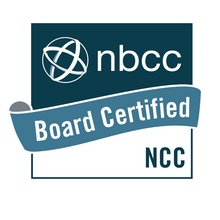
Counseling Strategies
by Dr. Moses L. James III, LPC, NCC, ACS, DCC

When it comes to counseling, James Consulting Services, LLC asserts the effective implementation of evidenced-based strategies. In fact, we follow the established interventions described by the National Autism Center and May’s Institute Center (www.nationalautismcenter.org).
Based on the National Autism Center’s National Standards Report (2015) the following components meet the criteria of research-based, effective interventions for children with autism:
Counseling using Cognitive Behavioral Strategies
Common strategies:
- An educational component describing feelings/emotions, physical responses to emotions, and prevalence of individuals with similar challenges.
- A cognitive restructuring component in which the therapist assists the individual to modify cognitive distortions such as “all-or-nothing” thinking or “catastrophizing.”
- Development of scale to identify anxiety or distress.
- Homework assignments. Individuals are expected to work on skills in the home, school, and community setting. Typically, there is a specific assignment that requires some type of recording of behavior or observations.
- Parent sessions.
Counseling using Modeling
There are two types of modeling — live and video modeling.
Live modeling occurs when a person demonstrates the target behavior in the presence of the child with autism spectrum disorder (ASD). When providing live modeling:
- Clearly outline, in writing, the target behavior to model.
- Ensure all individuals modeling the target behavior are doing so in a consistent manner. It may be helpful for parents/caregivers/therapists to practice together to make certain each person provides the same model.
- Obtain the child’s attention prior to modeling the target behavior.
- Develop a plan to fade or stop the use of modeling to encourage the child to independently display the target behavior.
Video modeling occurs when you pre-record a person demonstrating the target behavior. Video modeling can be a great option for children/adolescents with an affinity for television shows, movies, or interest in seeing themselves on a monitor (i.e., television screen, computer monitor, video recorder monitor). Some children/adolescents may enjoy assisting in the production of the video.
- Anyone who can correctly and independently perform the task can serve as a model — this includes the person with ASD.
- Make sure your child is paying attention to and is interested in the video.
- Point out the important steps/features to your child during the video. Be sure to make the best quality video possible. Remember, after the initial time invested in making the video, it is an easy-to-use teaching tool, and is cost- and time-effective (e.g., the same video clip can be used by multiple individuals any time).
Counseling using Naturalistic Teaching Strategies
Observe your child to find out what motivates him or her, and then structure teaching interactions around those interests.
- Use materials your child is likely to encounter on a daily basis. For example, if you want to teach her to identify items that fall into the category “things you play with,” you might use dolls, blocks, and cars that are available at home and at school.
- Teach skills in a variety of situations and settings (such as the home and community) while using a variety of materials (e.g., teach numbers by using different items such as pieces of candy or silverware).
- Provide consequences that are naturally found in the environment and have a direct relationship to the activity you are completing. For example, food might be a natural and direct reinforcer at lunch and toys might be a natural and direct reinforcer during “playtime.”
- Provide loosely structured teaching sessions that vary based on the child’s interests for that day. For example, if you are teaching your child to request objects of different sizes, you may need to use dolls rather than teddy bears if she shows a greater interest in dolls that day.
Counseling to Teach Parent Skills
Examples of skills parents learned to use include:
- Strategies to develop imitation skills
- Commenting on the child
- Expectant waiting to elicit communication
- Appropriate sleeping routines
- Joint attention
- Development of play date activities
Counseling Using Schedules
- Can be used once per day, multiple times per day, or once per week.
- Are often used to help teach “first, then” concepts — such as, first complete your chores, then you can watch television.
- Should be followed by access to preferred activities. You can gradually increase the number of activities required before giving your child access to preferred activities.
- Can be presented in multiple formats. You can use pictures (real photos for example), written or typed schedules, 3-D objects, or personal digital assistance programs.
The use of schedules may be as simple as:
- Placing the pictures/texts on the board at the time of the activity
- Pointing to the activity immediately prior to beginning each step or activity
- Taking the picture off the board when the step or activity is completed
- Placing the picture in a “done” container such as a bin, box, or pile
Counseling Using Scripting
Scripting consists of providing the child/adolescent with language to successfully complete an activity or interaction.
- Ensure prerequisite skills are mastered. For example, the child should have necessary reading skills or be able to imitate a verbal model.
- Scripting is typically used in conjunction with behavioral interventions such as reinforcement, modeling, and prompting.
- Scripts can be useful in a variety of social situations in the school, home, and community setting.
- Scripts should be faded as soon as possible to increase independence and spontaneity.
Counseling Using Story-Based Interventions
In particular, when using a story-based intervention, use written descriptions for:
- The target behavior
- The situations in which the behavior should occur
- The likely outcome of performing the behavior. This often includes a description of another person’s perspective.
Although the information included in the story will vary based on your child’s cognitive and developmental level, some typical features include:
- Information about the “who/what/when/where/why” of the target behavior
- Being written from an “I” or “some people” perspective with the goal of increasing perspective-taking skills
- Discussion or comprehension questions to make certain the child understands the main points
- Pictures to enhance comprehension of the skills
Story-based interventions are often used with individuals who have acquired reading and comprehension skills, but may also be used with individuals with strong listening comprehension skills.
Mission Statement
We dedicate ourselves to the visualization of autonomy, justice, beneficence, and fidelity in providing meaningful help to culturally diverse populations receiving clinical services.
It is our goal to engage and educate the individual in providing meaningful help in both feeling and getting better to culturally diverse populations.
Mental Health Center from WebMD
Mental health disorders affect an estimated 22% of American adults each year. Here you'll find in-depth mental health information including care, and various mental health conditions.


